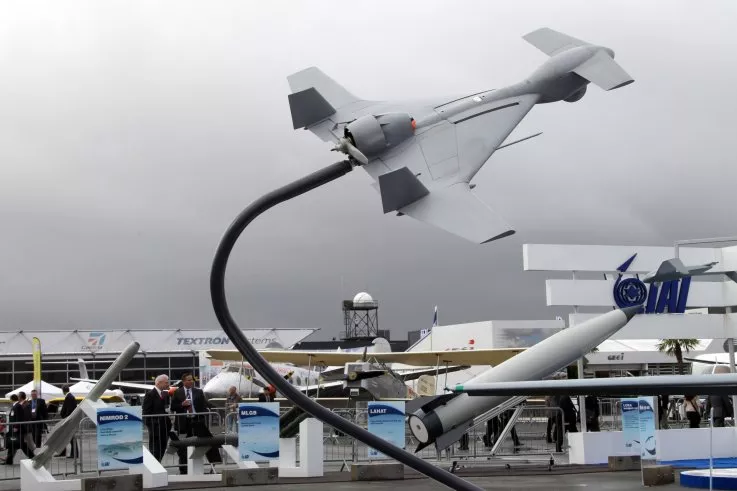Drones : Technology and Innovation
C an we all agree that most of us love or respect green ideas, technology and innovation? How about drones? Excellent air, land and sea mobility? Do they save lives by avoiding large war systems? Keep the peace? Or invade privacy? Reduce pollution? Provide amazing fun and limitless potential in serving humanity?
Drones are mini flying robots and nothing new. They are over one hundred years old with the first real drone attempt in 1916. Wikipedia states that "Drones were perfected by a Israeli citizen in Iraq born in 1937. 'Drone father' Abraham Karen is a designer of fixed and rotary-wing unmanned aircraft. He is regarded as the founding father of UAV (drone) technology.
Of course drones are weapons of war. High profile drone attacks by President Obama, including killing American born citizens, were highlighted by the main stream news. President Trump – and both President Bush and President Obama – had claimed executive power to order drone killings without providing explanation to the public, courts, and even most members of Congress. According to the Bureau of Investigative Journalism, drone attacks in Afghanistan, Pakistan, Somalia, and Yemen have killed between 10,000 and 17,000 people, including as many as 1,700 civilians – 400 of whom were children.
But a Al Jazeera headline reads "In Ukraine, humanitarian drones can save lives" As UAVs continue to change modern warfare, humanitarian drones are carrying out vital missions in Ukraine to save lives. The San Diego Union Tribune speaks to drones saving lives "Drones save American troops from risk of death, kill far fewer civilians than ground troops operations, and make our military more effective." Drones are transforming battlefield medicine and saving lives. Blood loss or “bleeding out” is the leading cause of preventable death on the battlefield, military health experts say. The Marines Corps used drones for general resupply during an exercise in Australia. Drones have also been used in Rwanda and Uganda to transport medical supplies to rural areas across mountain ranges and in bad weather.
Outside of war drones have endless uses. They really are a huge help to humanity. Search and rescue, surveillance, traffic monitoring, weather monitoring, agriculture, science and exploration, mining, fishing, animal conservation and planet protection, firefighting, drone-based photography and videography, building inspection, construction industry, oil and gas refinery inspection, thermal imaging, pet toys, law enforcement, sports like drone surfing, entertainment, drone fireworks, holidays lights and personal use.
There are drones that shoot darts. Toy foam drones that fly like birds to enchant cats. Drones that swarm like bees. Amazing big Aquila drones used by Mark Zuckerberg in future plans to extend internet use to remote areas. With swarms flying high and communicating with each other via lasers. The aquatic drones most impressive! Drones with suction cups to attach to whales or submarines and save energy via free rides. Drones that swim like jellyfish. Drones that fly and land into the water.
While drones may be so helpful to the world they also do add pollution. NOISE POLLUTION. At surf parties beach goers irritated by four or more drones whining and moving just overhead. Other sports events similarly vexed. And pets like dogs have been negatively affected by drones. Dogs with prey drives wanting to attack them.
Most of us don't think that we need to buy a drone. But I disagree. Obviously they make great gifts for children and others. But they offer good function, risk aversion and ease for the average family. Photography use is a given for drones. Especially for something like checking out your roof for maintenance. Sending your helpful drone to get pics and keep you safer just makes sense. A drone purchase could clearly become a whole family affair. Drone racing leagues to join! Drone obstacle courses to create! Drone freedom back up to future lockdowns, tyranny or big tech/postal service alternatives. The sky, the sea, even outer space have less limits to drone owners.
Consumers will spend $17 billion on drones over the next few years. There are around 900,000 licensed recreational drone operators and getting close to 1.5 million recreational drones right now. Free drone license turorials exist online. Some say that the TRUTH certificate is only slighty harder to get than passing a driver's test. But the FAA CFR Part 107 drone pilot exam is a difficult exam to pass and requires study in areas of Rules & Regulations, Airport Operations, Weather, Airspace, Flight Operations & Sectional Charts. The cost for a recommended starter drone is around $500. TRUST is a free aeronautical knowledge and safety test developed by the FAA for recreational drone flyers. All recreational drone flyers flying under the Exception for Limited Recreational Operations of Unmanned Aircraft must take and pass TRUST at their earliest opportunity and carry proof of passage when flying. The commercial pilot license fee is $175. There are drone schools with tuition near $400 to teach skills and license test preparation. All drones will be required to be registered except those recreational and weighing less than .55 pounds.
I do not own a drone but I surely will in the future. I can see using drones in landscaping. Even decorating outside tall trees for Christmas! And drone surfing sounds very fun! Like kite surfing but requiring no wind as the drone pulls you! Drones ability to follow us also could be great for women and children to stay or feel more secure.
Studying drones changed my view of them from negative to overwhelmingly positive. Very helpful for the future. How about the rest of you?

